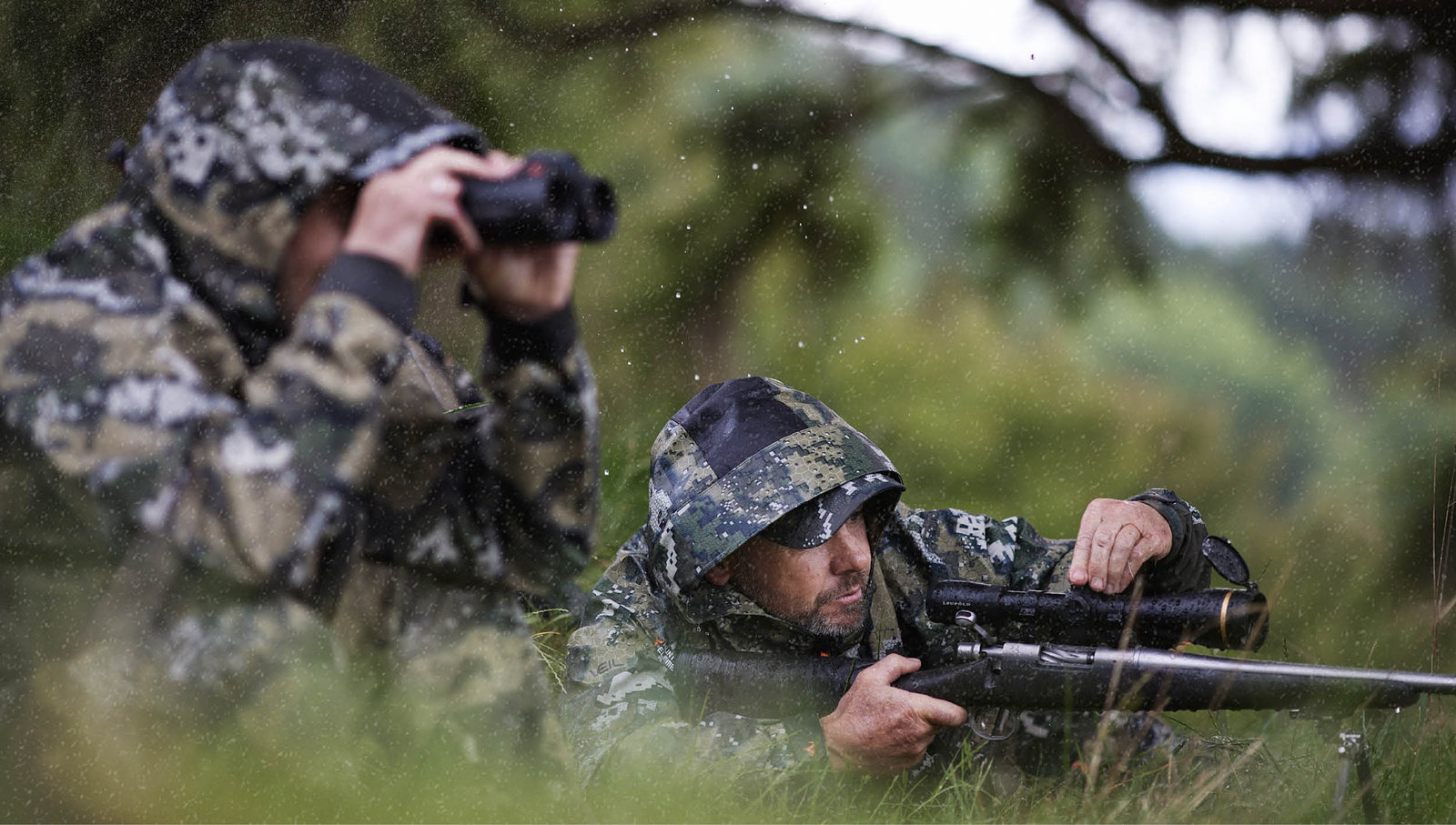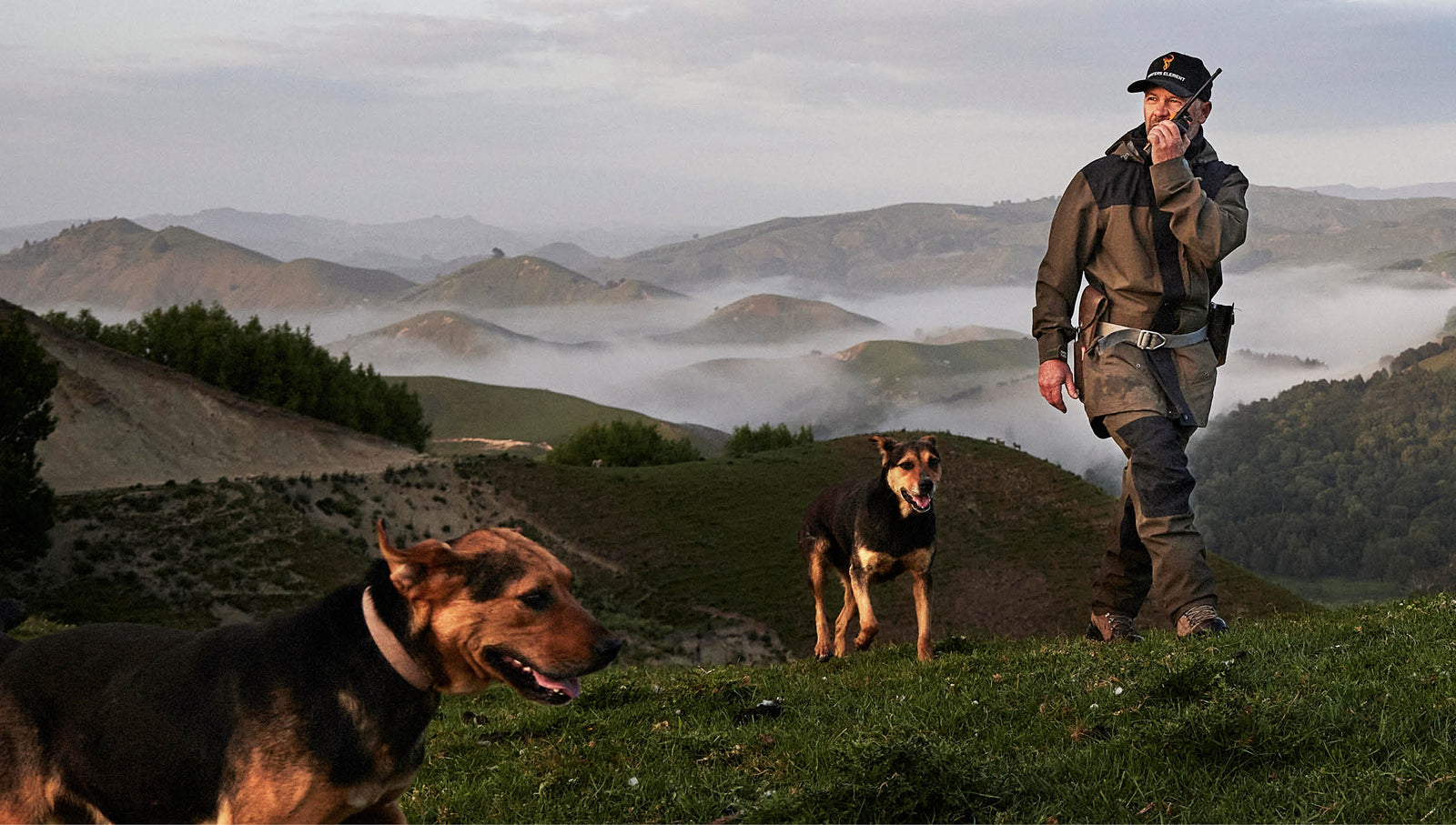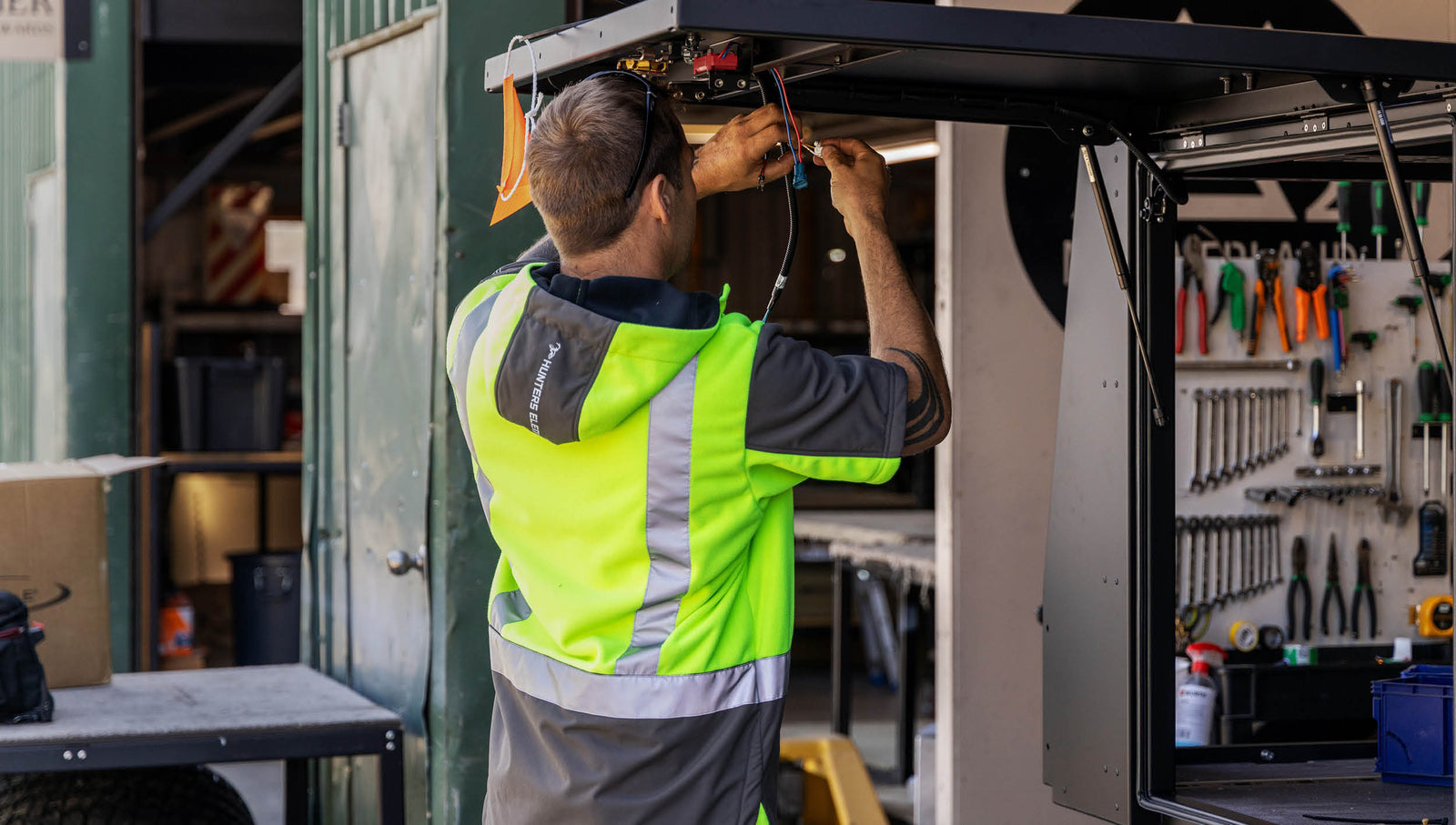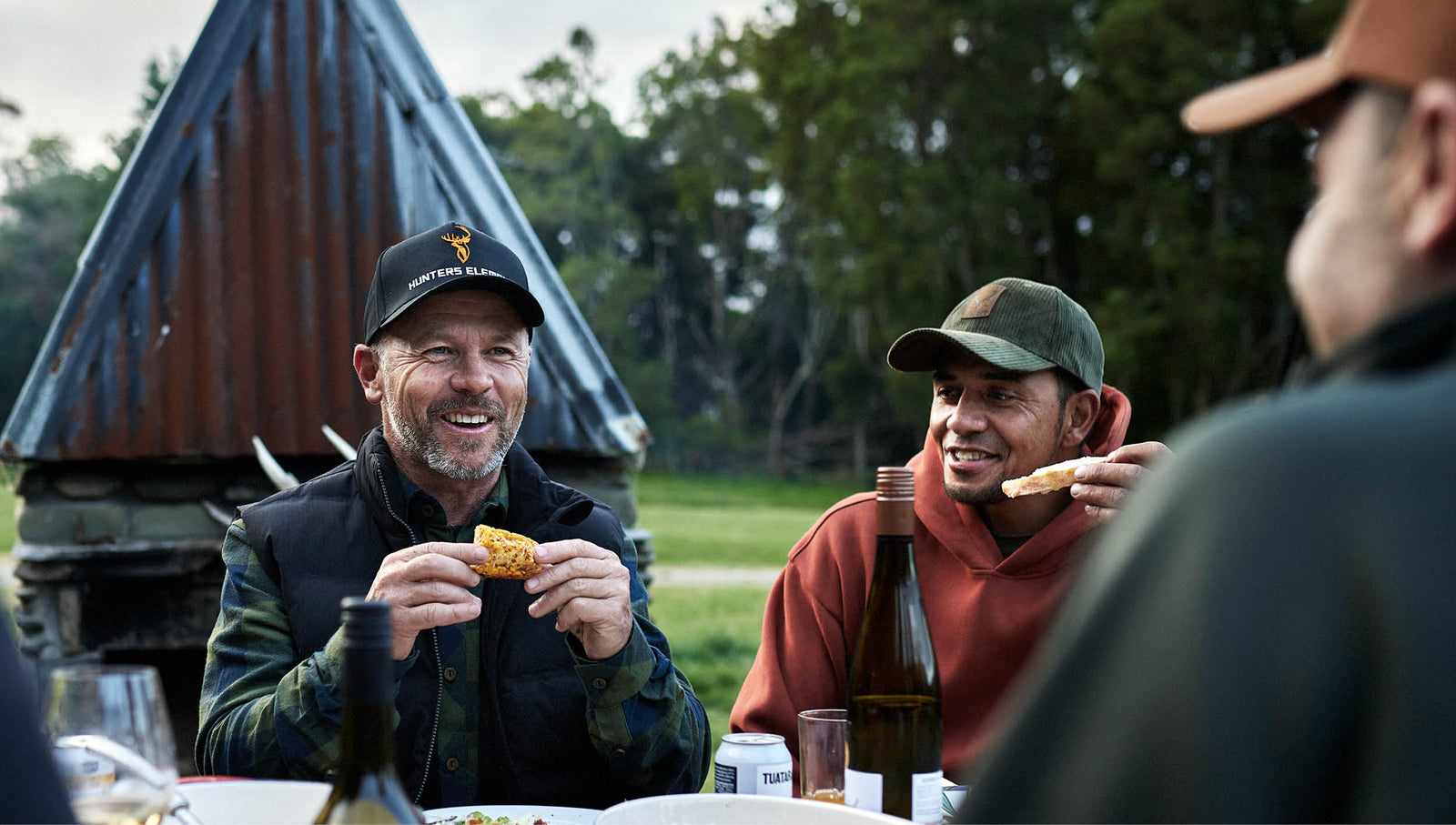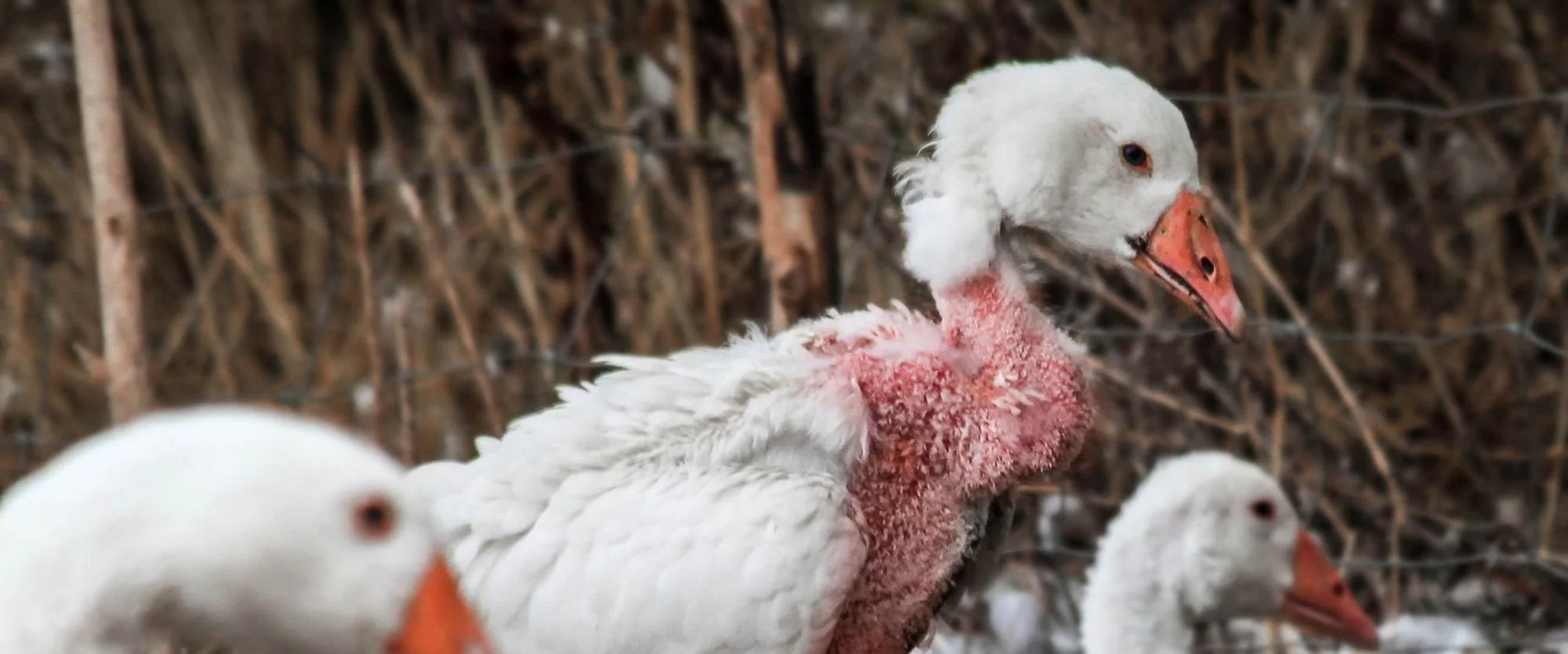Ever heard of live-plucking?
We were shocked to learn the horrors of how down from the insulation of jackets was sourced. Geese and Ducks being pinned down and ripped apart for their plumage, the soft insulation under their feathers. Once plucking is complete they are left naked and bleeding without pain relief, to shiver and suffer while their feathers grow back. Some farms were found to pluck their birds up to four times a year.
We looked at ethically sourced down alternatives. First; farms that do not live-pluck kill the birds for their meat before they are plucked for their down. This way the birds are not living in pain and suffering. The problem here is, tracing the source of the down to ensure it is cruelty free is incredibly difficult.
If the down product doesn't have a certified tag, stating it's from non live plucked sources, how do you trust it?
TRACEABILITY
Another issue is that many of the duck and geese farms are widely dispersed throughout Europe and Asia, causing it to be very difficult to monitor exactly where the down is sourced from to ensure that the farms are actually keeping their birds in reasonable living conditions. A level of scepticism is required when relying on the information being provided by the farms about their own conditions.
Through our own experience of trying to source down free from live-plucked birds, we found that it is tremendously difficult to trace the down we sourced to the specific birds or even farms. Often in the factories that were making our jackets, bags of down from live and non-live plucked birds are passed around and easily mixed up.
Live Plucked Birds photos provided by FOUR PAWS
OUR JOURNEY TO RESPONSIBLY SOURCED FILL
In 2017 we found out about the horrors that were involved in the feather down industry to make the worlds puffer jackets, sleeping bags, and pillows. Geese and Ducks being pinned down and ripped apart for their feathers leaving them bleeding until new feathers grow back, or even birds that were said to be a by-product of the food industry, had their plumage plucked after a life of force feeding with a pipe ramming grease down their throats for foie gras (a fatty style duck liver).
As hunters, we have no problem with killing animals for food and survival, it is a part of nature, but animal torture we want no part of. In our research for an ethical source, we found that there were feather down suppliers that sold Responsible Down Standard (RDS) certified feathers. This was exactly what we were after, an independent standard that ensured a traceable supply chain that guaranteed no cruelty to the birds. What we were surprised to learn though, was that some factories offered the live-plucked or foie gras options at the same time as torture free option. We decided to stay well away from supporting any of these suppliers until we knew for sure that our down was responsibly sourced from a completely ethical source.
THE CHOICE TO USE SYNTHETIC
In 2018 we released our Razor Jacket and Vest with a premium synthetic down substitute and continued our search for responsible down suppliers. The synthetic option is very close to down these days and actually outperforms down when wet, but still lags behind a little bit in the weight to warmth ratio. The intention was to move back to feather down when we found a supplier that sourced the feathers as a by-product of the food industry and no animal torture was involved at any stage of the animal's life.
THE PROCESS TO GO BACK TO FEATHERS
In late 2018 our search took us to China where we found some likely candidates to be a responsible supplier. These suppliers were all fully RDS certified and claimed to not offer live-plucked or foie gras options. To know for certain, we had to see the whole process ourselves, from the birds living conditions to the killing of the birds, all the way through to how the down was cleaned and prepared. It’s fair to say that the supplier was adhering to the claims they made so we decided that we would be comfortable bringing feathers back into the range.
In 2020, we started the development of our new insulated jackets for Autumn Winter 2021, the Sleet and Glacier Jackets. We found PrimaLoft, an RDS certified performance down supplier who has developed a product that was just what we were looking for, bringing together the best of both materials. Fibres of synthetic down is blended with duck down, which allows the down clusters to maintain loftiness with increased spring back, allowing the fill to hold more heat while being incredibly light and packable. The water-resistant treated duck down and synthetic down combined outperform each element individually in heat retention, packability and performance, wet or dry.
THE RESPONSIBLE DOWN PROCESS
In early 2019, CEO Rob Wilson and Head Product Designer Alex Broad jumped on a plane to see it for themselves and here’s what we saw from our responsible down supplier.
LIVING CONDITIONS
The first stop was to inspect the living conditions of our birds to ensure none were mistreated. The down we use in our jackets is a by-product of ducks farmed for Beijing (Peking) Duck, which is required to look pristine for presentation in restaurants. This was a reassuring sign that the birds we were going to be getting our down from were not mistreated. In order to have a duck that looks pristine in restaurants, it needs to be treated very well throughout its life (ie. fed well, able to develop muscles properly through exercise, no bruises or cuts, etc). A duck that lives its life in a cage or force-fed hormones to grow quickly, does not come out the other end looking good enough for Beijing Duck. The facility was indoors to protect birds from extreme heat and cold. It had opening windows for ventilation, large fans, plenty of room to wander around, food and water on tap, with absolutely no forced feeding or animal abuse.
KILLING AND PLUCKING
Next was the facility where the ducks were killed and the feathers were plucked. The ducks were killed using Halal methods, which involves a prayer being performed to pay respect to the animal before being killed humanely. The dead birds were put through a machine that instantly plucked the feathers, which were then frozen so they didn’t smell or rot while being shipped to the cleaning and drying facility. The killing method was very quick, clean and unstressful which again was very reassuring.
SELECTING AND WASHING THE FEATHERS
The magnitude of the washing, drying and seperating facitlity was quite remarkable. First the feathers are washed and dried. The feathers are then put into seperating chambers. These are four enourmous tumble dryers, each one five stories high, where the feathers are mechanically fluffed repeatedly until the light down feathers float to the top and pass into the next chamber. The further along the row of chambers the feathers reach, the higher the quality and loft of the down is. This entire process can be repeated up to 10 times in order to obtain the highest quality down.
THE FINAL PRODUCT
Inspecting the entire process of our bird's lives, through to how they are killed, and plucked was comforting knowing that there was absolutely no mistreatment, force-feeding, live plucking, and the birds were killed humanely. This allowed us to check all the boxes required to go away from synthetic down and back to feather down for our 2019 Razor Elite Jacket and Vest.
